CHATHAM TOWERS
Chatham Towers. Credit: NYC Urbanism, 2017.
Chatham Towers
Date: 1965
Architect: Gruzen & Partners
Address: 170 Park Row
Civic Center Urban Renewal Area seen in red with Chatham Towers and and Chatham Green completed. Brooklyn Bridge South Urban Renewal Area (Pace University and Beekman Hospital) is seen in blue just south of the Brooklyn Bridge. Credit: NYC Urbanism.
Gruzen & Partners cemented their status as the kings of NYC brutalism with their Civic Center projects: Chatham Green, which combines the curves of Aalto’s MIT Baker House with the muscular articulation of London’s post-war housing estate towers; One Police Plaza, Manhattan's #1 true-brutalist building; Metropolitan Correctional Center; Murry Bergtraum High School; and Chatham Towers, the city’s finest and most-brutalist mid-century apartment towers.
Once a crowded two-acre site occupied by thirty-one buildings on the last remaining block of the notorious Five Points slum, the Chatham Towers development was part of a greater slum clearance project that drastically reshaped the Civic Center area north of the Brooklyn Bridge and east of Centre Street stretching into Chinatown. Built by the Committee of Middle Income Housing under the Title I Housing Act, the two board-formed concrete high-rises known as Chatham Towers house 120 units, half of which have a terrace. Following decades of red brick apartment blocks, Chatham Towers was a departure from New York City housing, having more in common with British post-war housing.
At 25 stories, the height of the towers made it possible to develop only 15% of the site, leaving plenty of space for an elevated public plaza covering a 125 car garage. Gruzen chose landscape designer M. Paul Friedberg, who worked on One Police Plaza, to design the space surrounding the towers with a play area and a concrete plaza with benches and tree pits. Since the space was above the garage, it not only created a concrete wall at street level, but it removed a line of vision from the surrounding sidewalks.
Here-in lies one of the problems with the design; like many from the era, the development was insular and failed to connect with the surrounding urban fabric. The city was pushing an automobile-centered lifestyle, and the elevated plaza made the development more isolated, cutting itself out of the surrounding neighborhood. Chatham Towers did, however, have many accomplishments. It was the first residential building built of exposed concrete poured on site, the first to use Swedish-designed aluminum windows that sandwiched Venetian blinds between two window panels, and the first to make interior walls out of two layers of sheetrock separated by air as to mute noise between apartments.
While they may be out of place anywhere else in the city, Chatham Towers are right at home in Gruzen’s east-side brutalist micro-city and would fit well in the post-war masterplans of the brutalist forefathers that dot the world from the capitals of Europe to the new towns of South America and India. The facades are rugged and raw; board-formed concrete, rectilinear in form, composed like a modernist sculpture, chiseled away at the terraces with a sculptural periscope that houses the buildings’ water towers on the roofs. The windows are truly modern, both in form and function, achieving the formal effect of dogmatic modernist fenestration without sacrificing the comfort of residents and making the apartment better, because of, not despite their modernist forms. Lastly, the site plan is a grade-A brutalist landscape – while it ignores all of the tenets that we now know define successful public space – reminding us that the best of brutalism does incorporate rough concrete, stark geometries, and greenery, which do look quite nice together. The towers are symmetrical without being classicizing or boring, raw and unrelenting without being oppressive, furthering the narratives of orthodox modernism and post-war brutalism without sacrificing the comfort of residents. Chatham Towers bring together modern building technology, daring aesthetics, elemental, sculptural form, and emerging theories of urbanism, even if they are now discredited, like the best of post-war architecture.

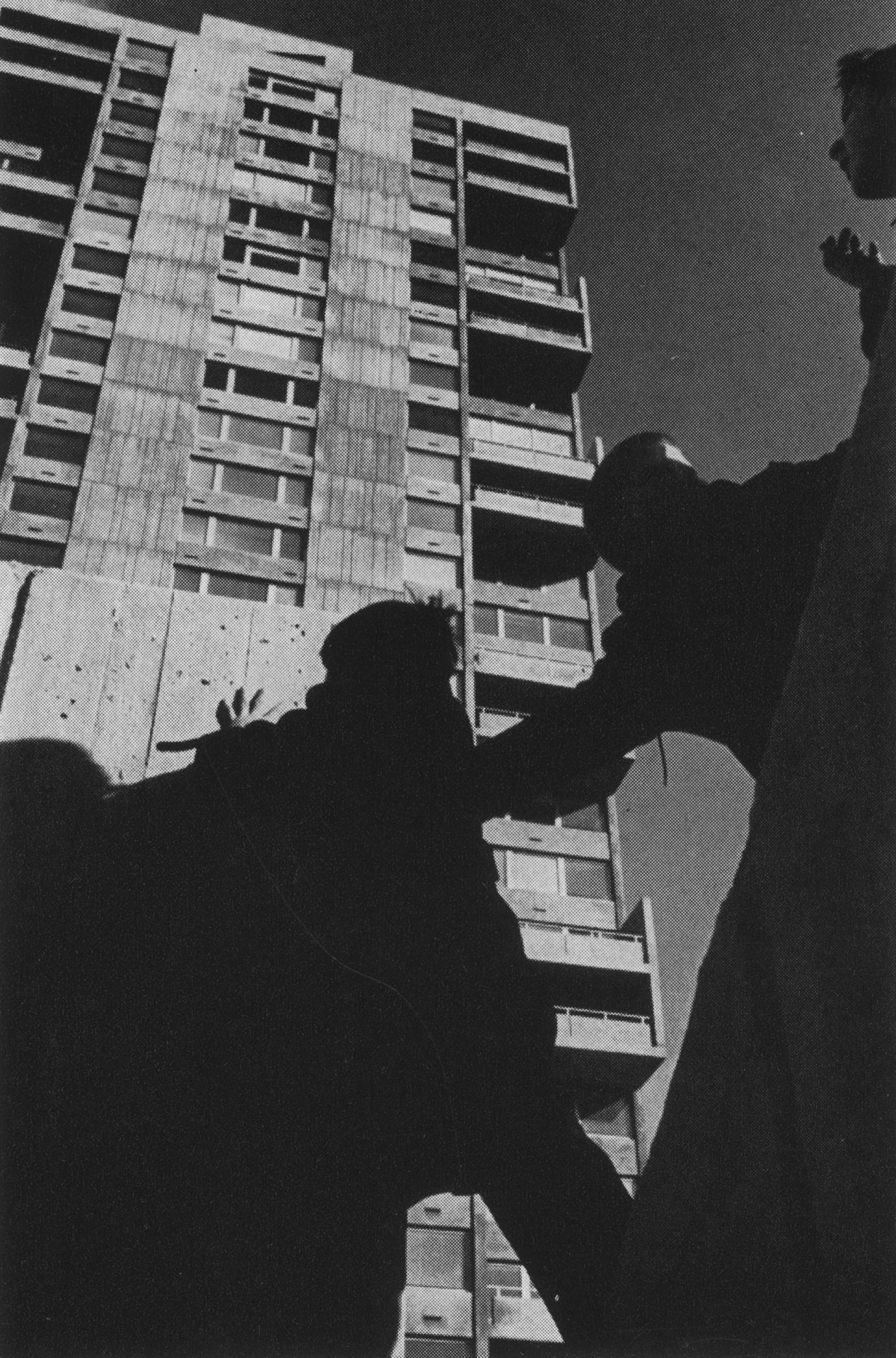
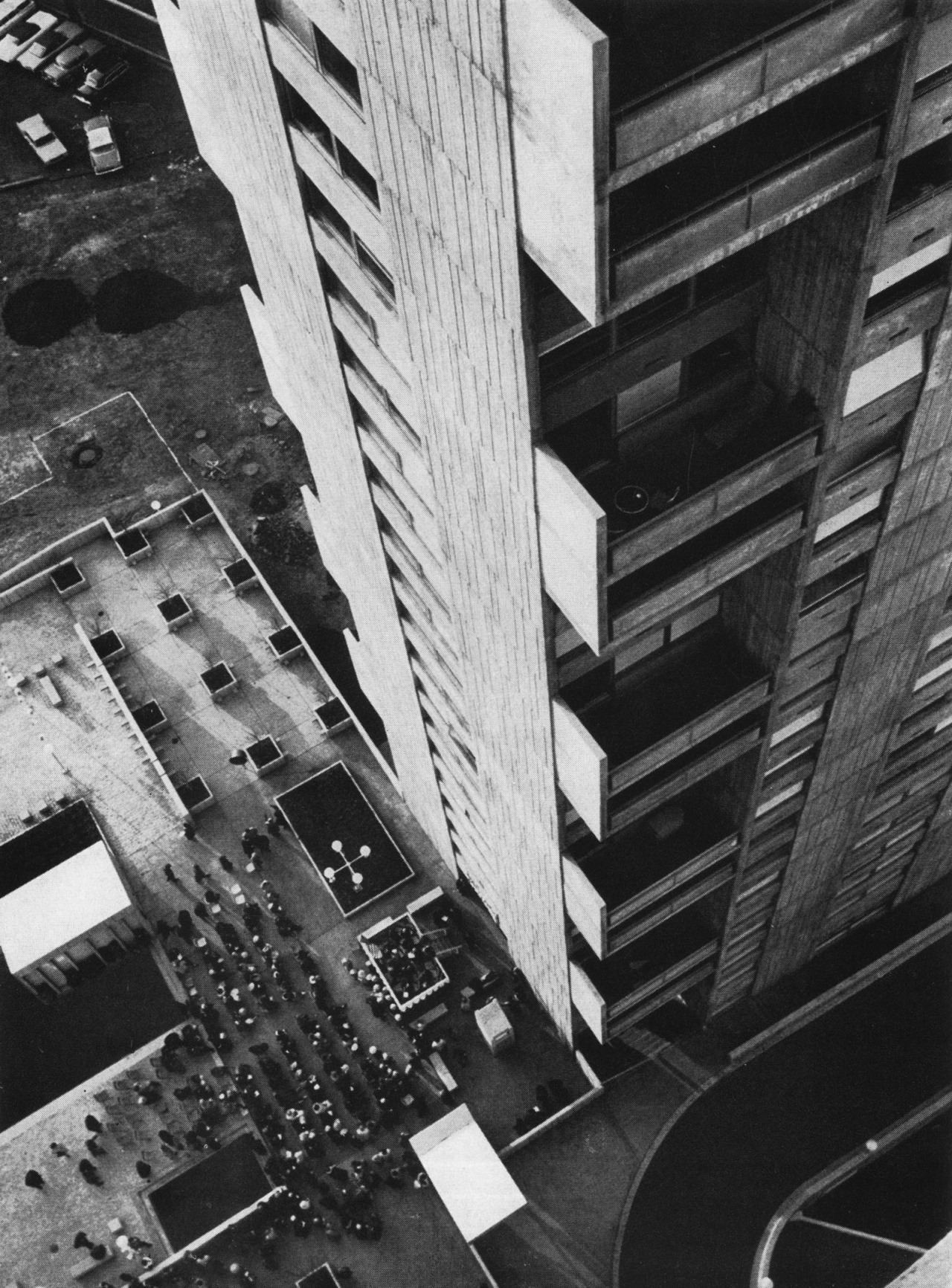
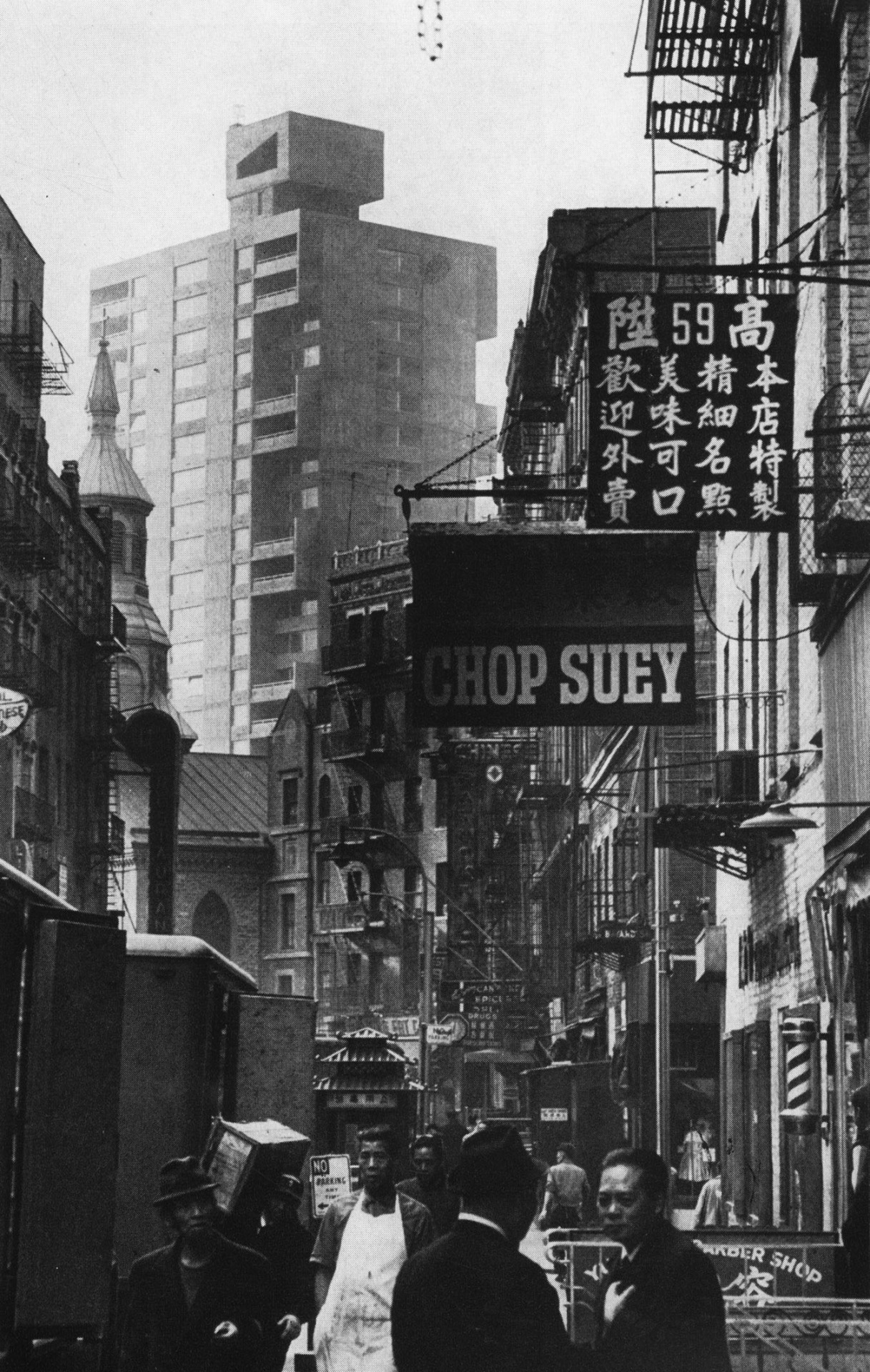
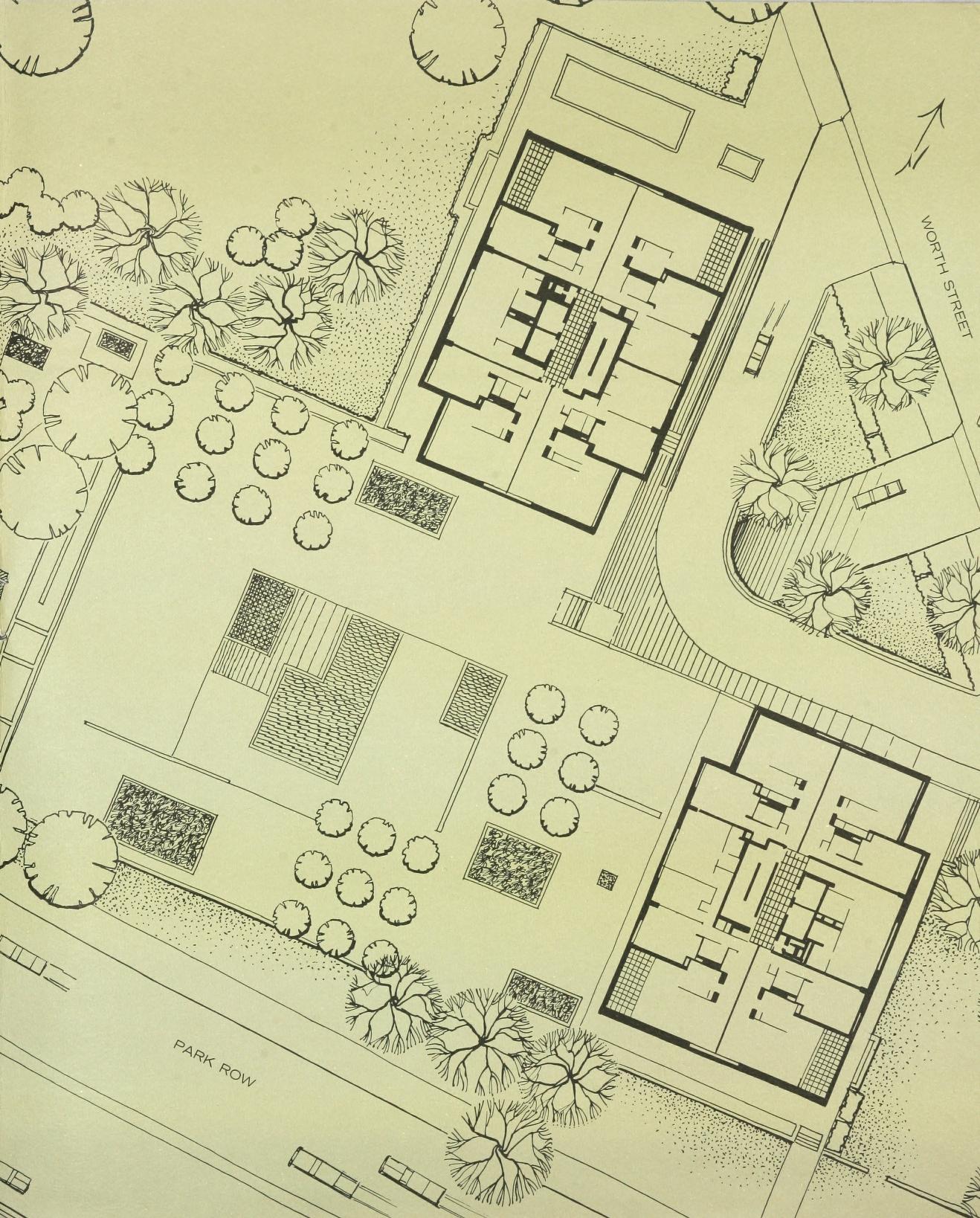
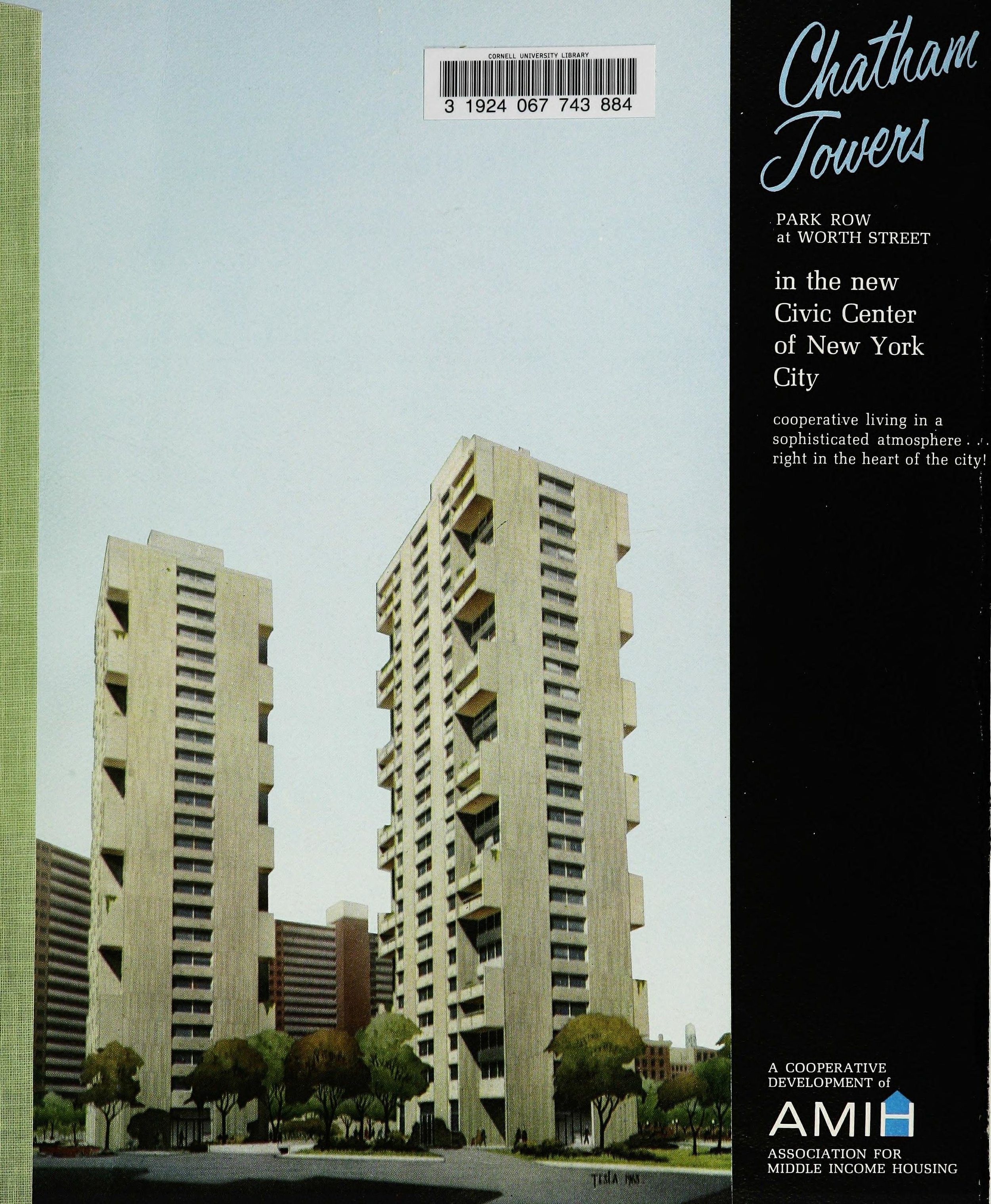
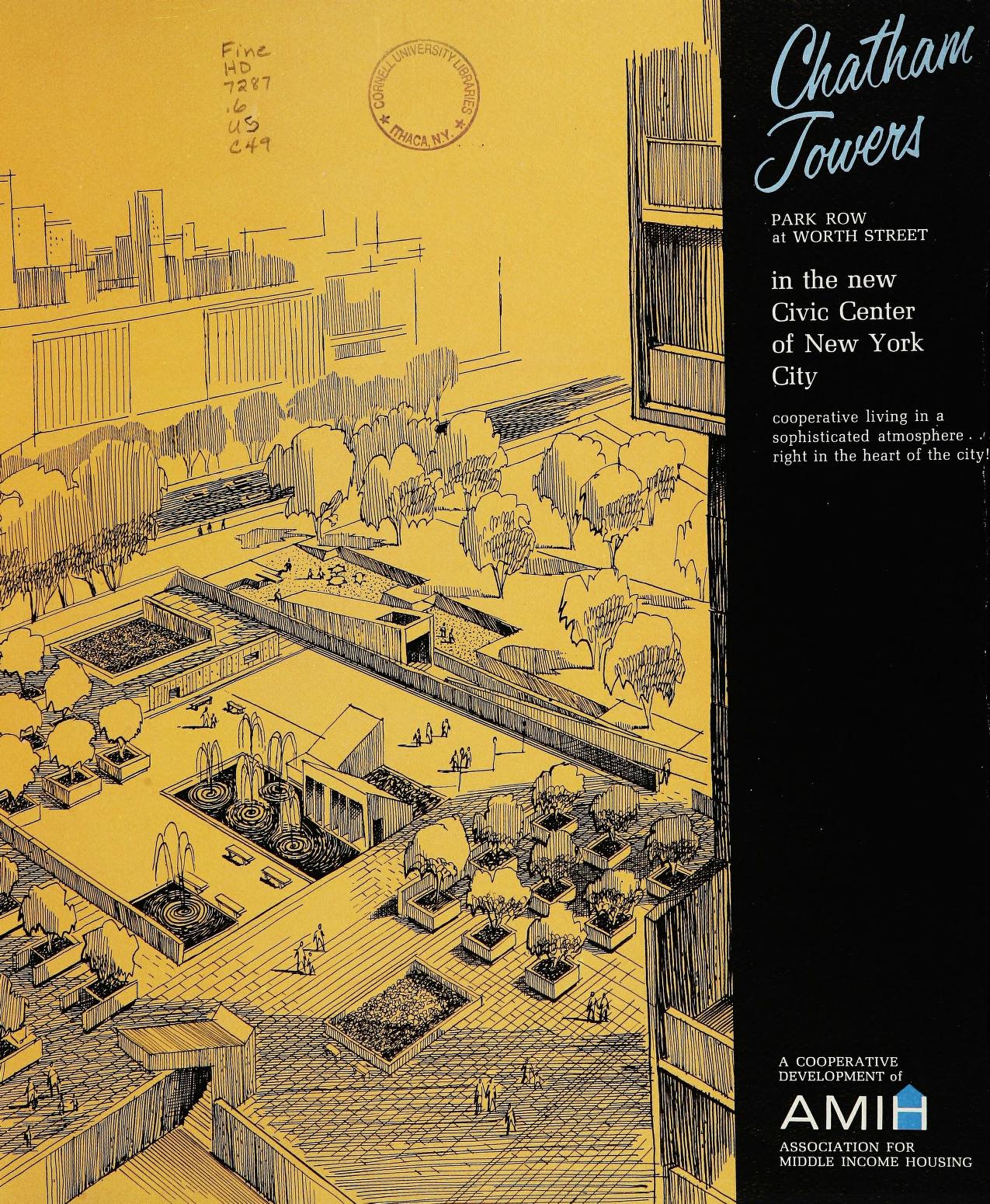
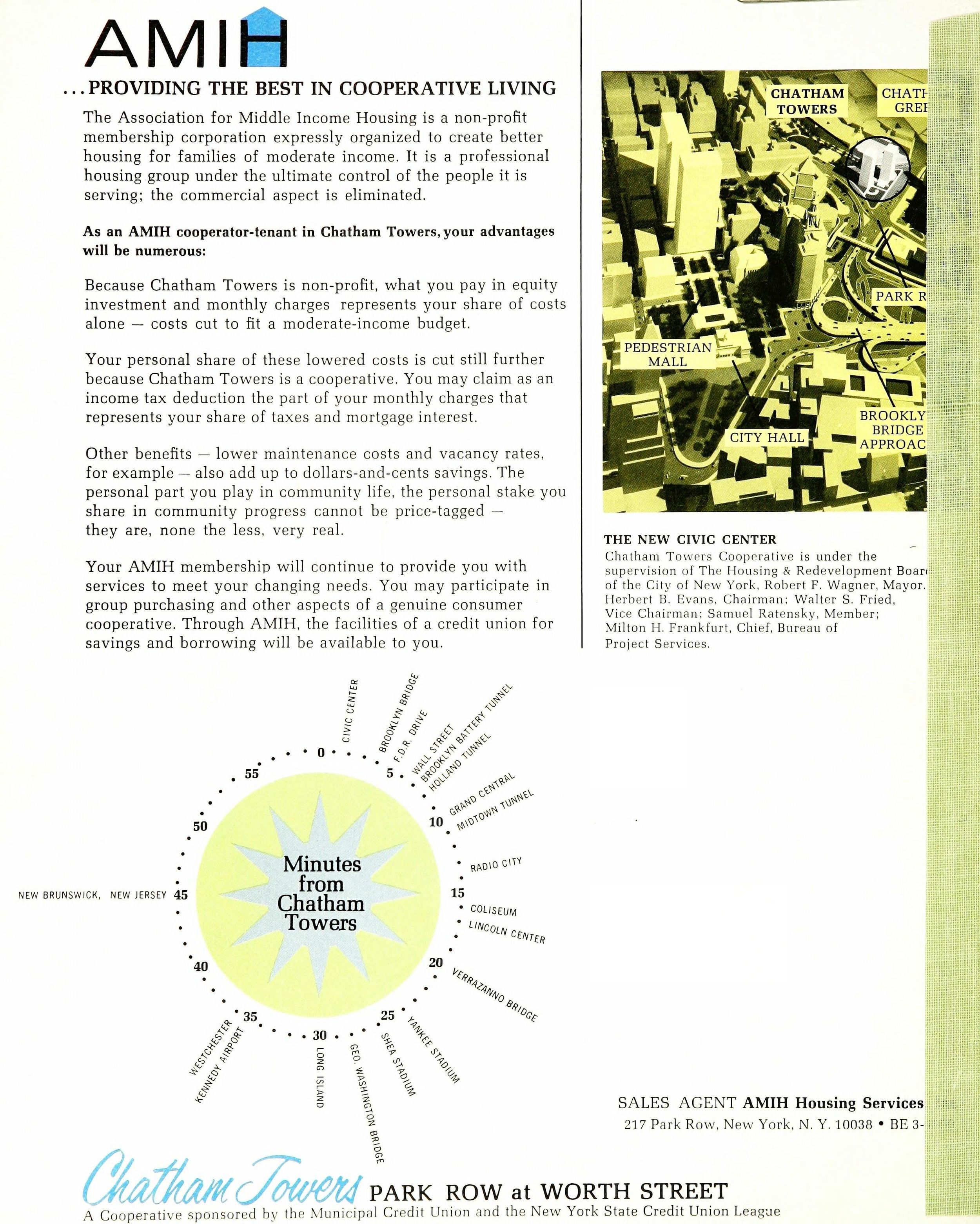
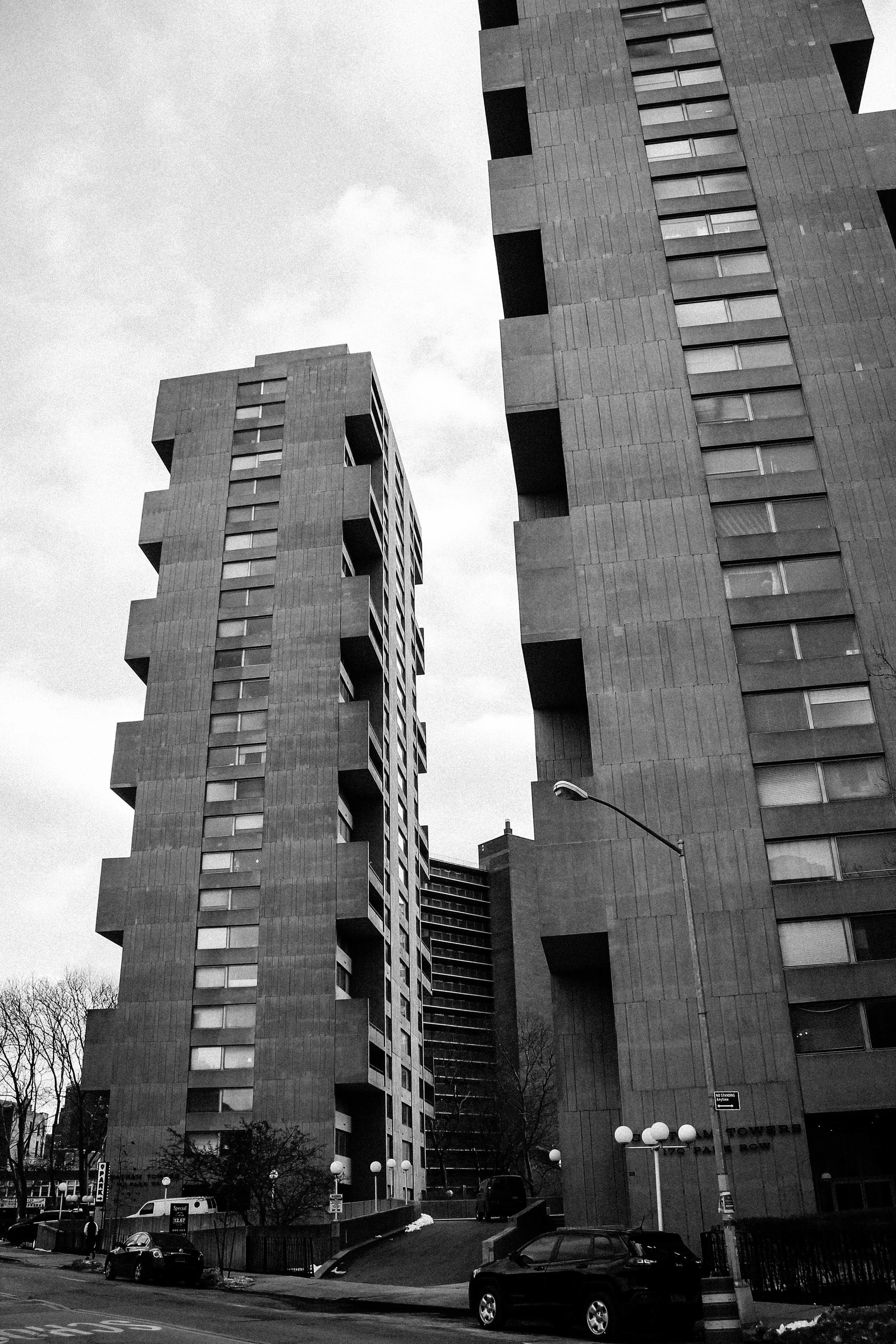
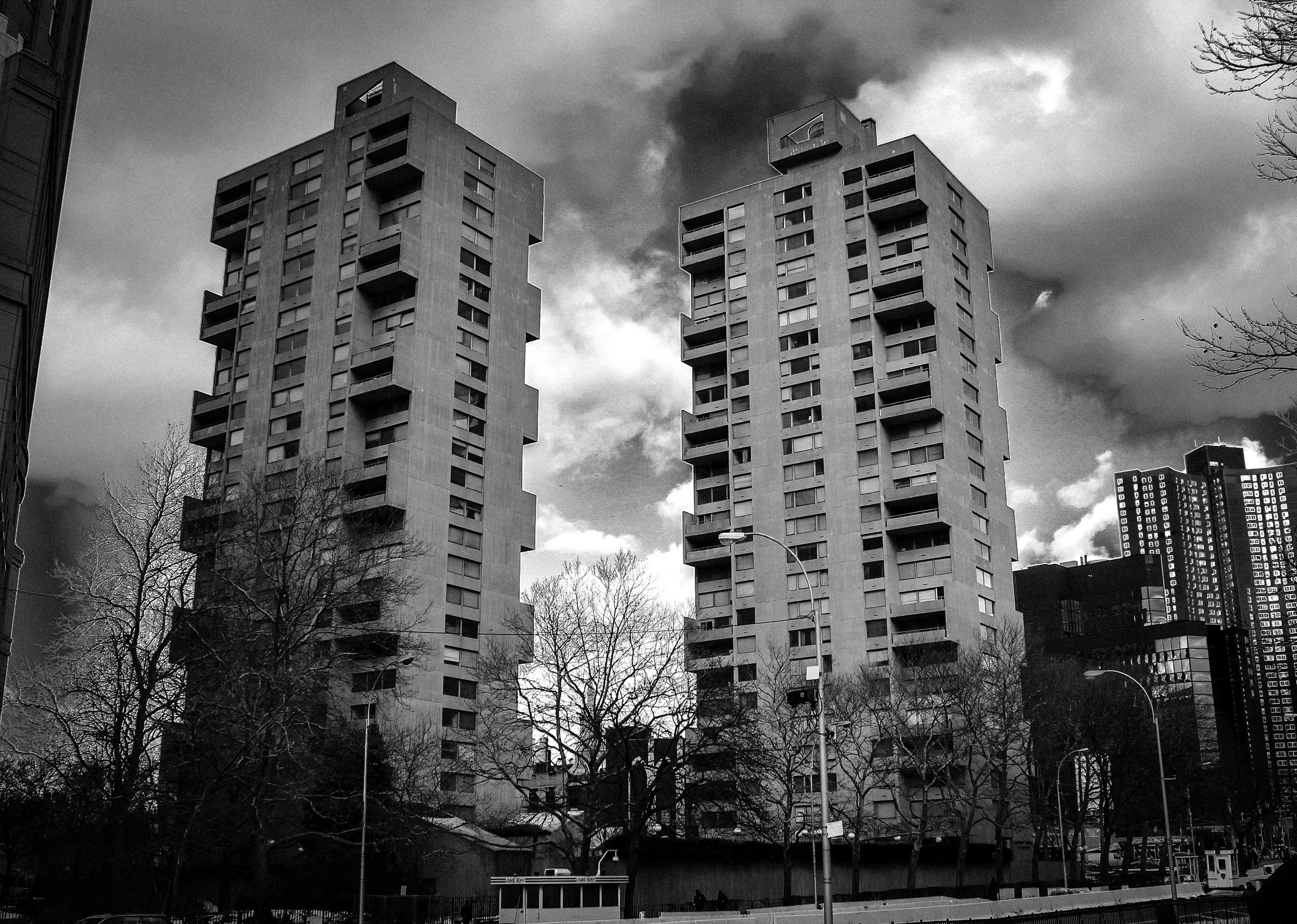
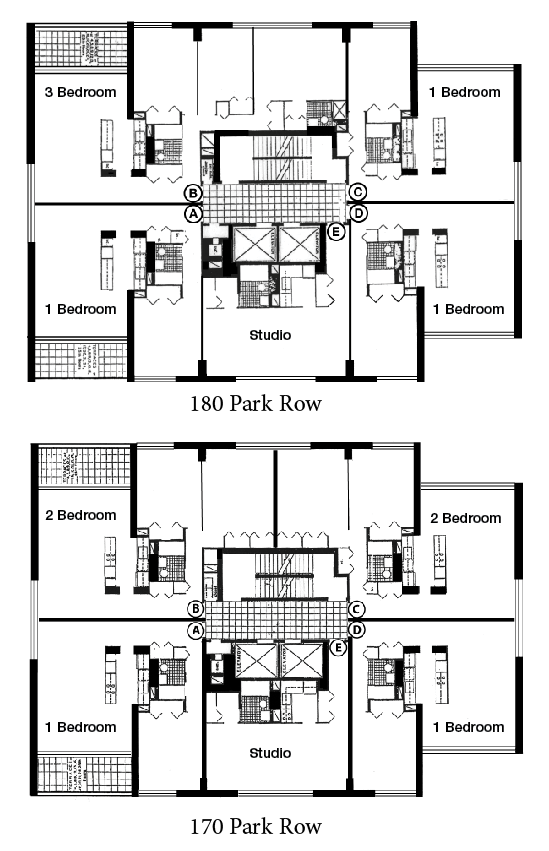
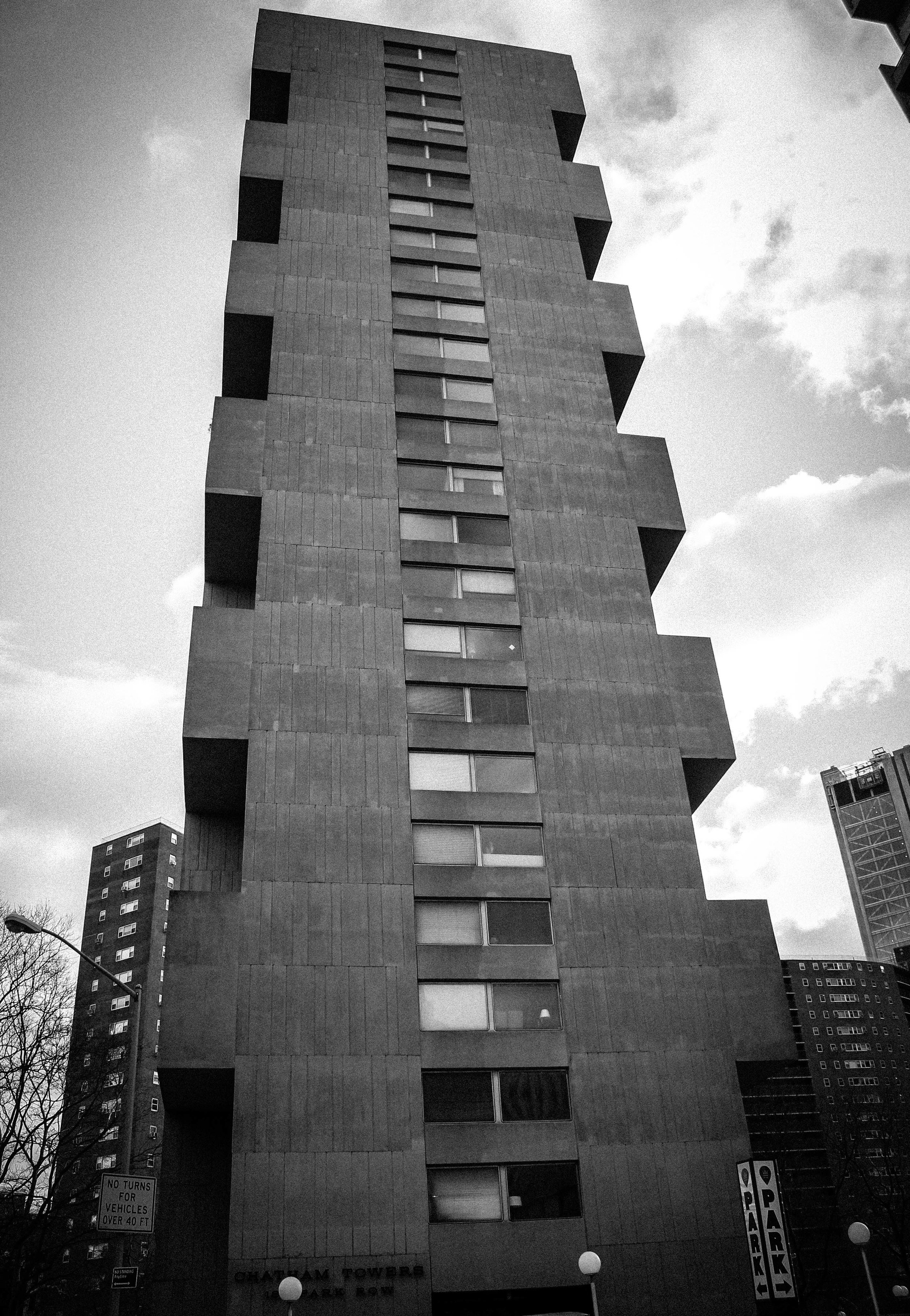

Sources:
Chatham Towers, Park Row at Worth Street in the new Civic Center of New York City. Association for Middle Income Housing, Housing Services, Cornell University Library, Circa 1963.


